What Is the Serrano Pepper Spice Level?
Serrano peppers range from 10,000 to 23,000 Scoville Heat Units (SHU), making them significantly hotter than jalapeños (2,500–8,000 SHU) but milder than cayenne peppers (30,000–50,000 SHU) and habaneros (100,000–350,000 SHU). This heat level makes serranos ideal for adding bold flavor and controlled spice to salsas, tacos, sauces, and more.
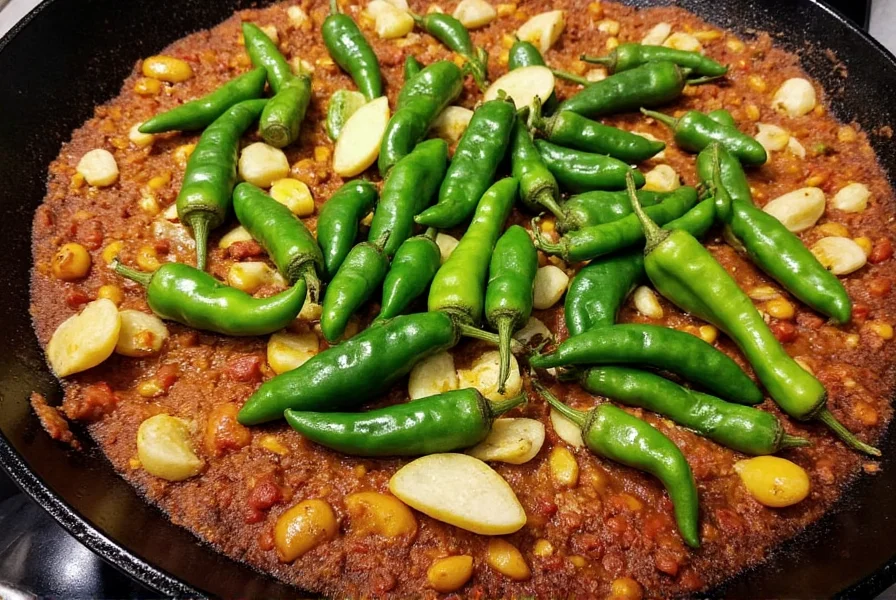
In this comprehensive guide, we'll cover everything you need to know about serrano pepper spice level, including detailed comparisons, culinary applications, buying tips, safe handling practices, and answers to common questions. Whether you're a beginner or seasoned cook, you'll find practical advice to master these versatile peppers.
Understanding the Serrano Pepper Spice Level
When discussing spiciness, the Scoville scale is the standard measurement for capsaicin concentration, the compound responsible for heat in chili peppers. Developed in 1912 by Wilbur Scoville, this scale quantifies heat intensity in Scoville Heat Units (SHU).
| Pepper | Scoville Heat Units (SHU) |
|---|---|
| Bell Pepper | 0 |
| Jalapeño | 2,500 – 8,000 |
| Serrano | 10,000 – 23,000 |
| Cayenne | 30,000 – 50,000 |
| Habanero | 100,000 – 350,000 |
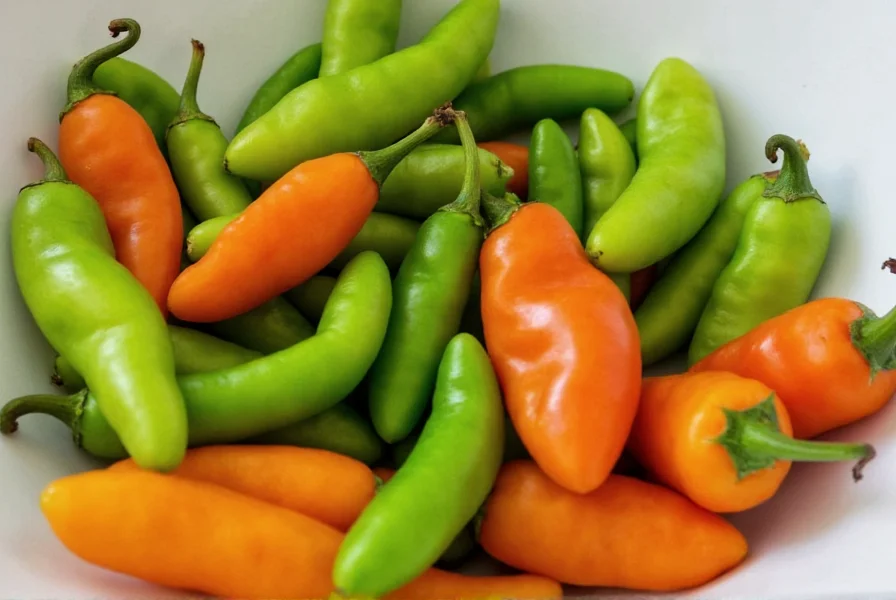
How Hot Is a Serrano Compared to Other Peppers?
Here's a detailed comparison of serrano peppers against common chili varieties:
- Jalapeño: Milder (2,500–8,000 SHU), commonly found in grocery stores. Great for beginners but lacks serrano's intensity.
- Thai Chili: Much hotter (50,000–100,000 SHU), tiny but packs significant heat.
- Shishito Pepper: Typically mild (1 in 10 spicy), perfect for grilling or snacking.
- Hatch Green Chile: Varies by season (1,000–8,000 SHU), similar to jalapeños in heat.
- Poblano/Ancho: Mild and smoky (1,000–2,500 SHU), often used in mole sauces.
Serranos strike a perfect balance—enough heat to excite without overwhelming, especially when seeds and ribs are removed. They offer a brighter, more herbal flavor than jalapeños while being easier to handle than habaneros.
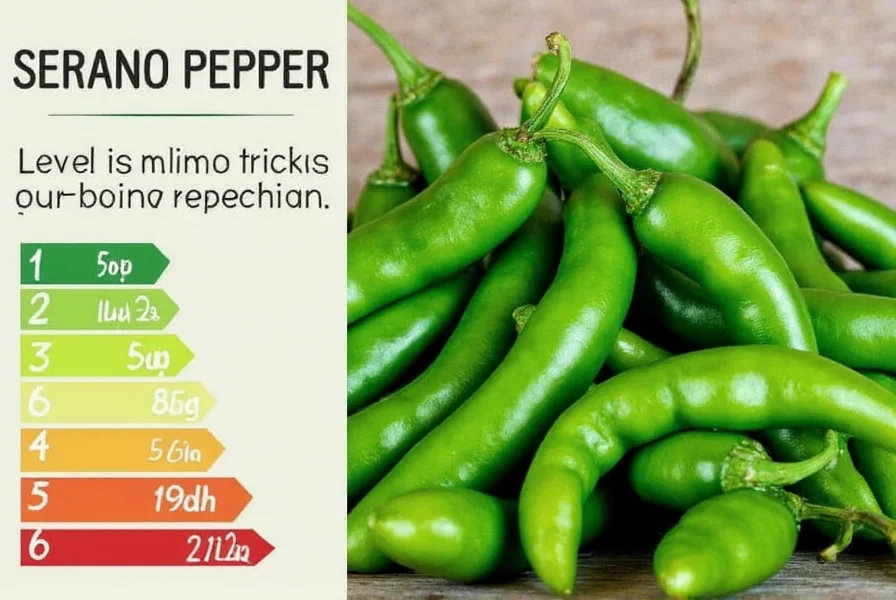
Culinary Uses of Serrano Peppers
With their ideal heat level, serrano peppers shine in diverse dishes:
1. In Salsas and Pico de Gallo
Dice finely and mix with tomatoes, onions, cilantro, and lime for a zesty, fresh salsa. The serrano's bright heat complements acidity without dominating.
2. Roasted or Grilled
Char over open flame until skin blackens, then steam and peel. Roasting caramelizes natural sugars, enhancing sweetness and depth for tacos or garnishes.
3. Pickled Serranos
Brine in vinegar, salt, sugar, garlic, and spices for tangy heat. Perfect for tacos, sandwiches, or charcuterie boards.
4. In Stews and Soups
Add whole or sliced peppers to infuse warmth. Remove before serving for milder dishes or leave in for extra kick.
5. Blended into Hot Sauces
Combine with garlic, vinegar, and citrus for versatile condiments. Serranos provide balanced heat without overpowering complexity.
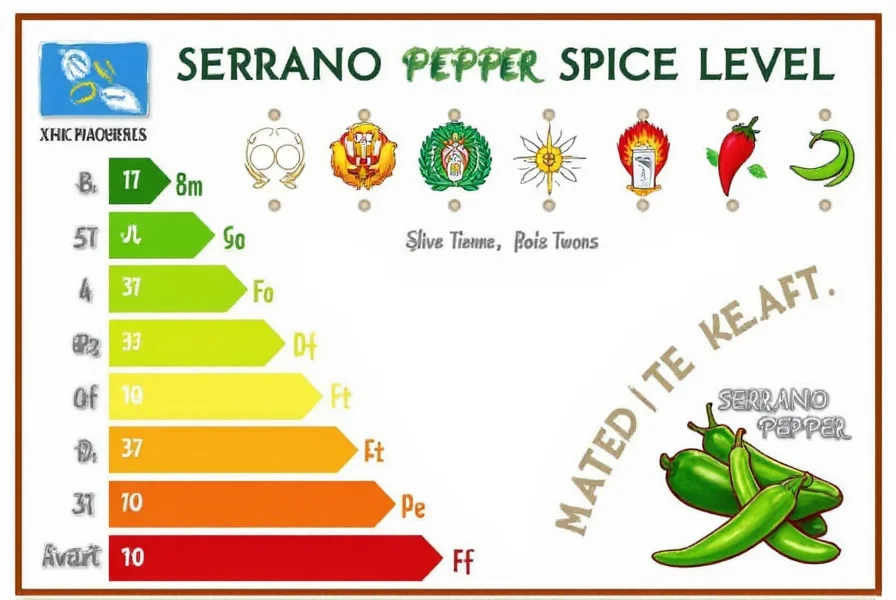
Buying Guide: Choosing the Best Serrano Peppers
When selecting serranos, prioritize these qualities:
What to Look For
- Firmness: Taut skin with no soft spots or wrinkles. Avoid mushy peppers.
- Color: Green (milder, 10,000–15,000 SHU), red (hotter, 15,000–23,000 SHU), or purple (intense flavor).
- Size: Smaller peppers are typically hotter; larger ones are milder and sweeter.
- Stem Condition: Bright green and attached—brown stems indicate age or poor handling.
Best Brands and Products
- Tia Lupita Pickled Serrano Peppers: Ideal for tacos and sandwiches with tangy heat.
- Goya Serrano Peppers (Frozen): Retains flavor and heat after thawing; great for year-round use.
- La Costeña Serrano Peppers in Brine: Consistent flavor, widely available in Latin markets.
- Trader Joe's Organic Serrano Peppers: Affordable, pre-washed, and fresh.
- Chilcano Ground Serrano Powder: Concentrated heat for seasoning meats, soups, or popcorn.
Who Should Buy What?
- Home cooks: Fresh or frozen for versatility.
- Spice enthusiasts: Ground powder for bold seasoning.
- Taco lovers: Pickled varieties for authentic street-style flavor.
- Busy professionals: Pre-chopped frozen for quick prep.
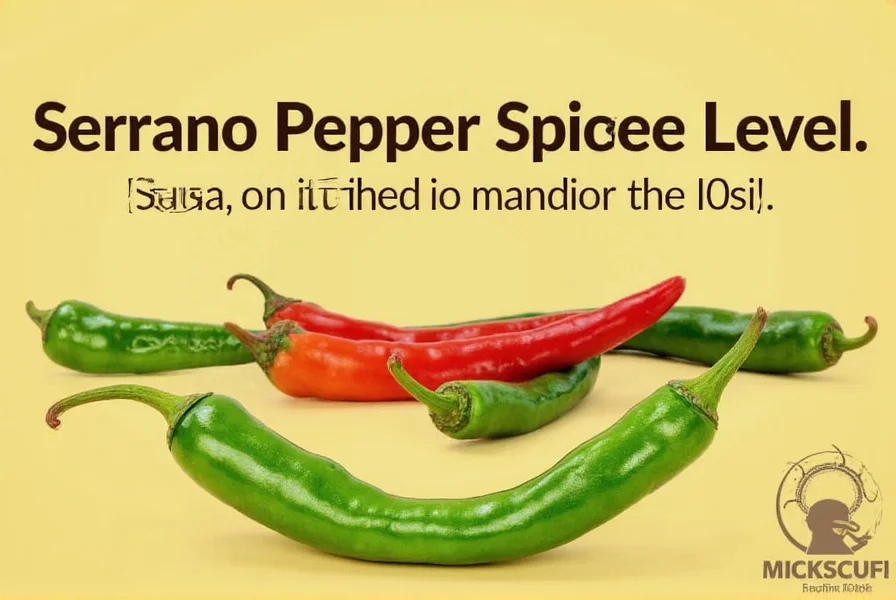
Handling Heat Like a Pro: Practical Tips
Follow these safety steps to avoid capsaicin burns:
- Wear gloves: Always use disposable gloves when handling or cutting.
- Avoid face contact: Never touch eyes or face—capsaicin causes severe irritation.
- Remove seeds and ribs: Most heat resides here; discard for milder results.
- Soak in dairy: If skin contact occurs, wash with milk or yogurt (capsaicin is fat-soluble).
- Rinse tools thoroughly: Use vinegar or soapy water to remove residual oils.
- Start small: Add peppers gradually—taste and adjust to avoid over-spicing.
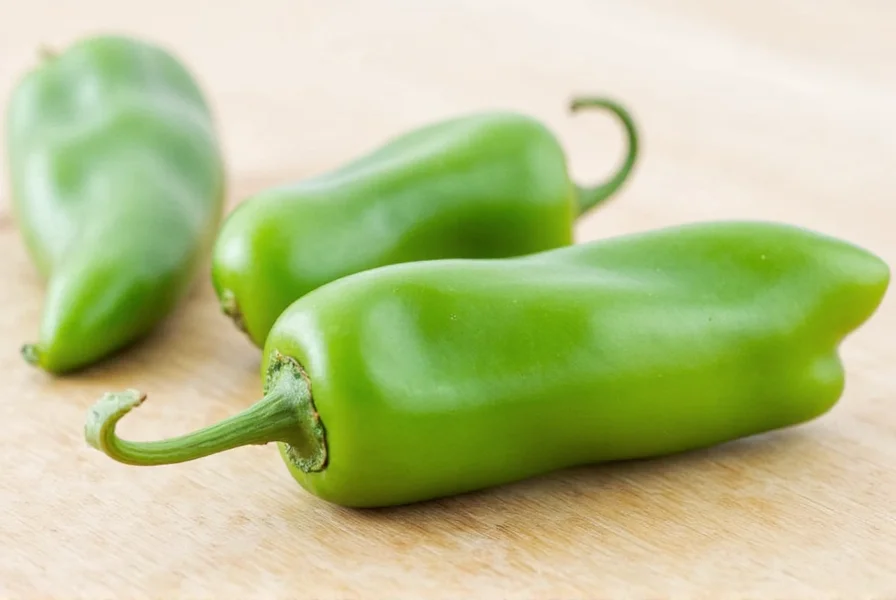
Frequently Asked Questions About Serrano Pepper Spice Level
How hot are serrano peppers on the Scoville scale?
Serrano peppers range from 10,000 to 23,000 Scoville Heat Units (SHU). This places them significantly hotter than jalapeños (2,500–8,000 SHU) but milder than cayenne peppers (30,000–50,000 SHU). Heat levels vary based on growing conditions, ripeness, and individual pepper characteristics.
Are serrano peppers hotter than jalapeños?
Yes, serranos are typically 2–3 times hotter than jalapeños. Jalapeños max out at 8,000 SHU, while serranos start at 10,000 SHU and can reach 23,000 SHU. Both share similar flavor profiles, but serranos deliver more intense heat.
What makes serrano peppers spicy?
Spiciness comes from capsaicin, concentrated in the white ribs and seeds. Genetics and growing stressors (like drought) increase capsaicin production. The amount varies even within the same pepper batch.
How can I reduce the heat of serrano peppers in cooking?
1) Remove seeds and ribs (where 80% of capsaicin resides), 2) Soak sliced peppers in salt water or vinegar for 15–30 minutes, 3) Cook thoroughly (heat breaks down capsaicin), or 4) Balance with dairy, citrus, or sugar. Always start with less and add more gradually.
Are red serrano peppers hotter than green ones?
Yes. Green serranos (10,000–15,000 SHU) are less mature and milder. Red serranos (15,000–23,000 SHU) are fully ripe, hotter, and sweeter due to increased capsaicin and sugar development.
How do I handle serrano peppers safely?
Wear gloves during preparation. Avoid touching your face, especially eyes. If exposed, wash skin with soapy water or baking soda paste. For eye contact, rinse with milk or yogurt (not water). Clean surfaces with vinegar to neutralize oils.
What's the best way to store serrano peppers?
Store fresh peppers in the refrigerator's crisper drawer for 2–3 weeks. For longer storage, freeze whole peppers (they soften when thawed but retain heat), pickle in vinegar (several months), or dry them (up to a year in airtight containers away from light).
Can I substitute serrano peppers for jalapeños in recipes?
Yes, but adjust quantities. Use 50–70% less serrano than jalapeños for similar heat. If substituting jalapeños for serranos, increase by 1.5–2x. Note that serranos have a brighter, more herbal flavor profile than jalapeños.
Want More Control? Grow Your Own Serrano Peppers
Growing serranos at home is simple and rewarding. Here's what you need:
Basic Growing Requirements
- Climate: Warm and sunny (6–8 hours daily minimum).
- Soil: Well-draining, pH 6.0–7.0 (slightly acidic to neutral).
- Water: Keep soil consistently moist, especially during flowering and fruiting.
- Fertilizer: Balanced organic fertilizer every 4–6 weeks.
Harvesting Tips
- Harvest at any stage—green for milder heat, red for maximum spice and sweetness.
- Use sharp scissors to cut peppers cleanly without damaging the plant.
- Regular harvesting encourages continuous production throughout the season.
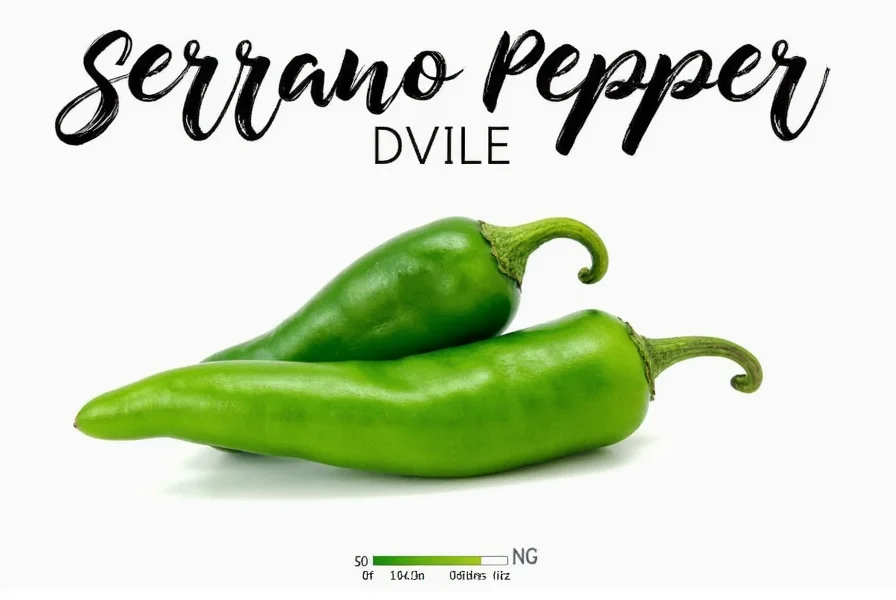
Final Thoughts: Embrace the Burn!
Serrano peppers (10,000–23,000 SHU) are the perfect spice partner for home cooks—offering bold flavor without overwhelming heat. Mastering their use transforms simple dishes into culinary highlights.
With the right knowledge of heat levels, safe handling, and versatile applications, serranos become an indispensable tool in your kitchen. Experiment fearlessly: roast them for depth, pickle for tang, or blend into sauces for controlled fire.
Remember: the best way to conquer heat is to understand it. Start small, taste often, and let serranos elevate your cooking to new heights.
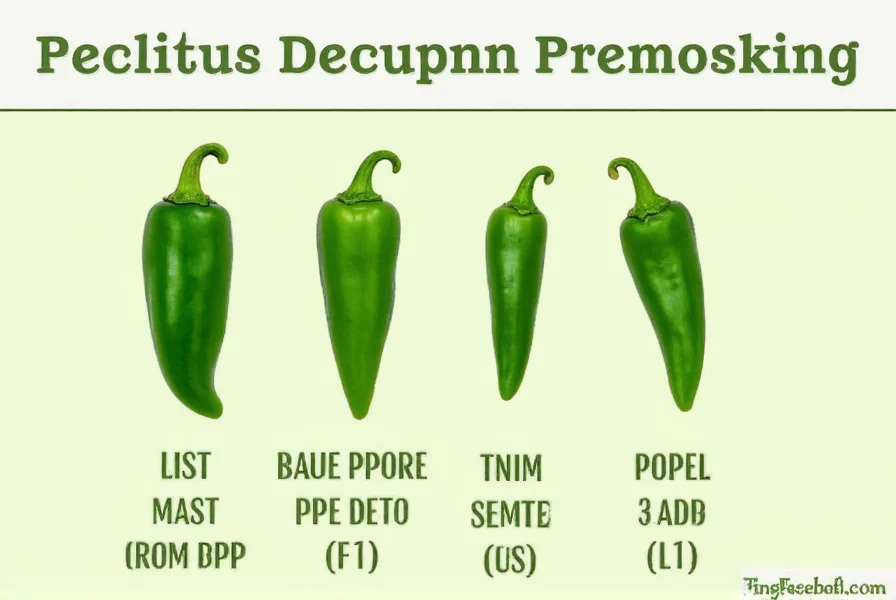

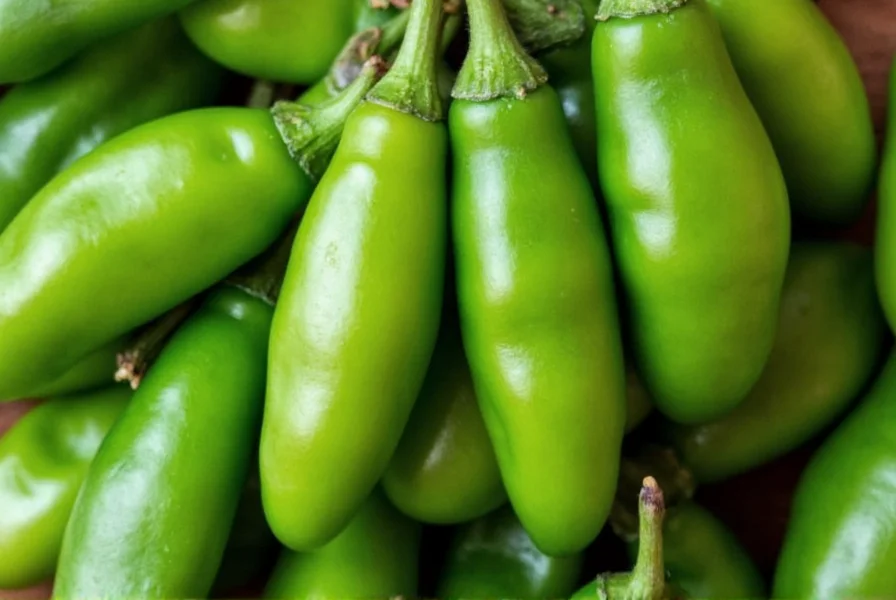









 浙公网安备
33010002000092号
浙公网安备
33010002000092号 浙B2-20120091-4
浙B2-20120091-4